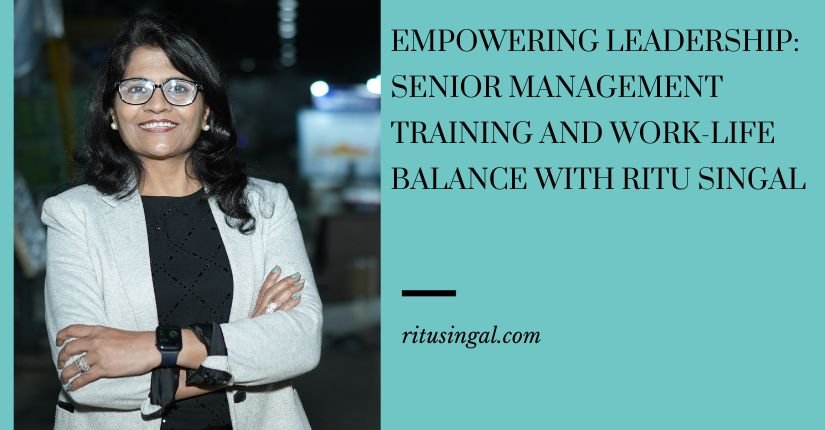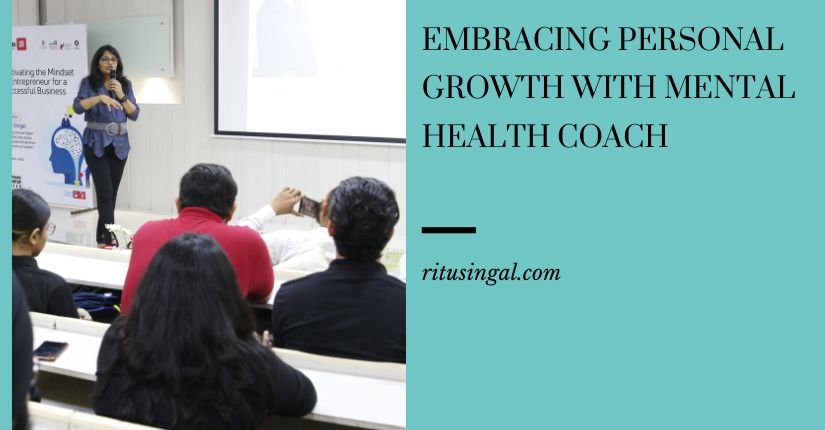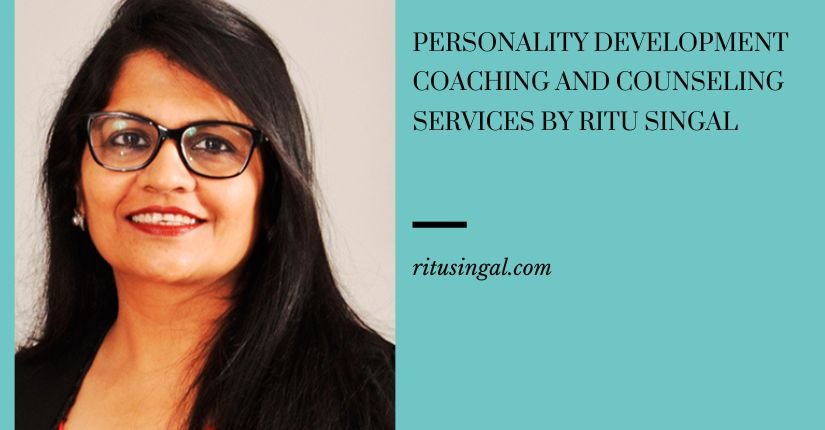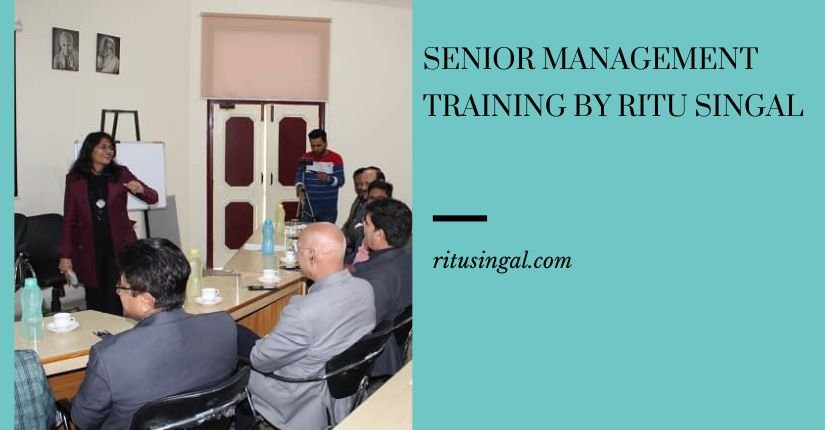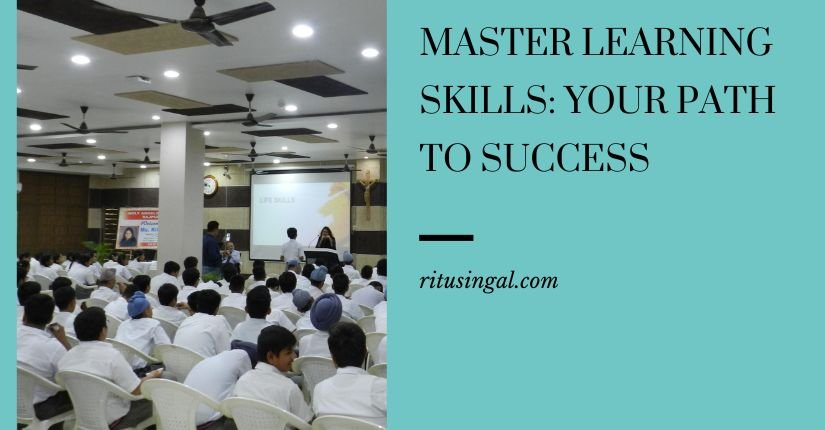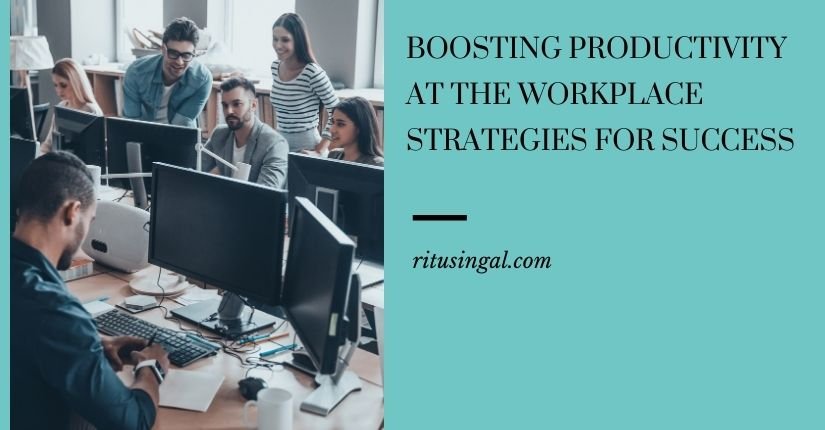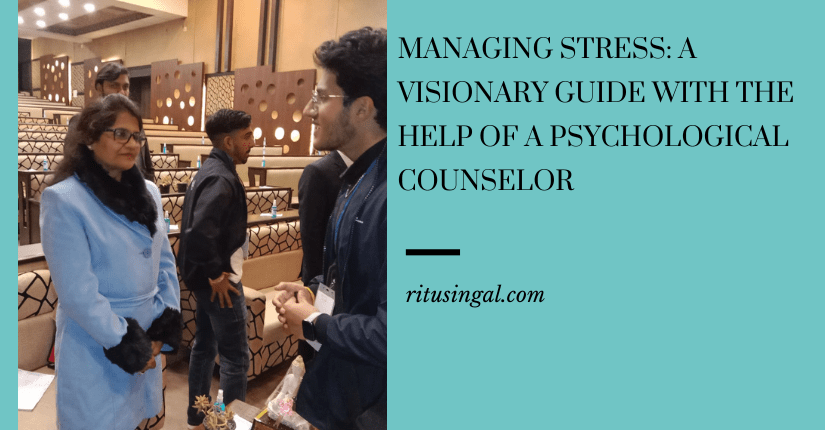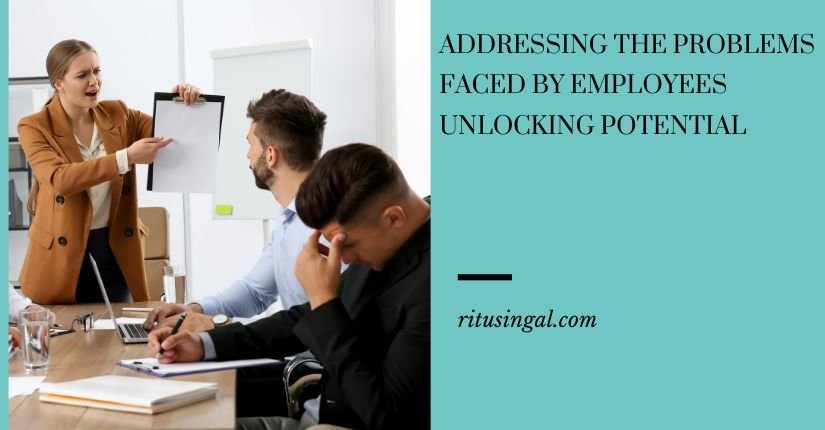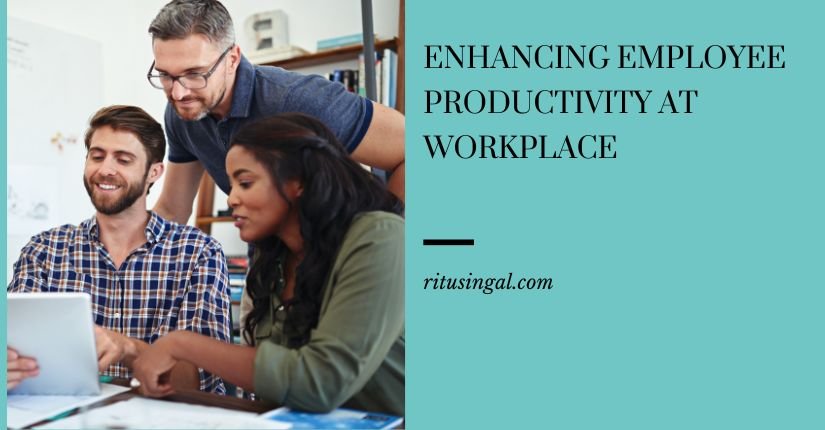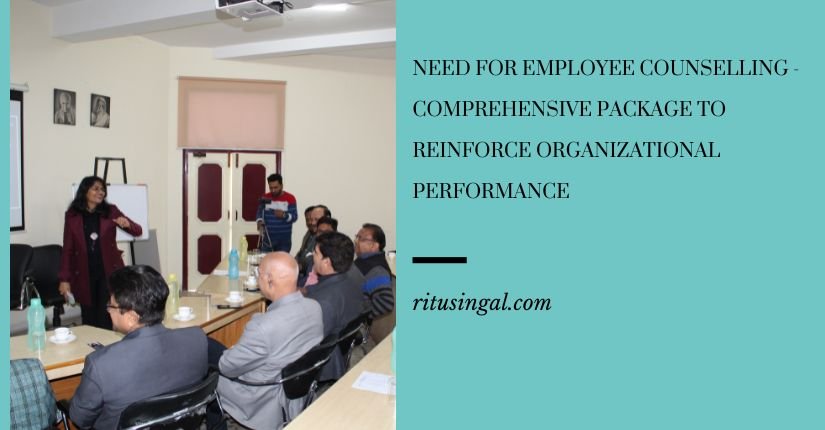Life Coach Ritu Singal believes that one place claims a significant chunk of our time in the boring modern life. It influences our overall sense of fulfilment: in the workplace. Beyond being a mere means to earn a paycheck, the workplace has become an integral part of our existence.
It’s where we dedicate countless hours, where dreams take shape, and where personal growth intertwines with professional success. In this article, we’ll explore why a healthy work-life balance is crucial, delving into the profound importance of work in our lives and why it goes beyond a mere financial transaction.
Imagine your average day. Work occupies a substantial portion of our waking hours, from when we wake up until we lay our heads on the pillow. It’s where we engage with colleagues, faces challenges, and contribute our skills and talents to something larger than ourselves. Considering the sheer amount of time spent at work, it’s no wonder it significantly impacts our overall well-being.
While financial stability is essential, work encompasses much more than a paycheck. Productivity at the workplace allows us to pursue our passions, exercise our creativity, and make a tangible impact on the world around us. It provides:
- A platform for personal growth.
- Learning new skills.
- Developing a sense of accomplishment.
In the workplace, we set goals, overcome obstacles, and discover our true potential. It is a space where dreams can be transformed into reality.
Moreover, work holds immense social significance. It connects us with like-minded individuals who share our professional goals, fostering a sense of belonging and camaraderie. We develop relationships, form lifelong friendships, and create lasting memories through collaboration.
The workplace becomes a community where we find support, encouragement, and a shared purpose. It becomes a vital part of our social fabric, adding depth and meaning to our lives.
In the fast-paced, ever-evolving landscape of the modern world, work also acts as a source of stability and structure. It provides a sense of routine and order amidst the chaos.
The workplace offers a sense of purpose and direction, allowing us to contribute to something larger than ourselves. By actively engaging in our work, we derive a sense of pride and fulfilment, knowing that what we do impacts society.
Let’s start with what productivity at the workplace even means:
Productivity is like conducting a symphony at work. It’s about more than rushing through tasks or ticking off a never-ending to-do list. It’s about finding the right balance between effort and accomplishment and making meaningful contributions.
Being productive means working smarter, not just harder. It’s about understanding what’s most essential and focusing your energy on those things. It’s like prioritizing the tasks with the most significant impact and bringing your best self to the table.
But productivity isn’t a solo act. It’s all about teamwork and collaboration. It’s about working together, leveraging each other’s strengths, and achieving collective brilliance.
Checkout: Employee Relation Counseling for Lasting Workplace Commitments
Statistically ranked top 10 workplace challenges
1) Communication Issues: Effective communication is crucial for smooth operations within a workplace. However, miscommunication, lack of clarity, and misunderstandings can lead to inefficiencies and conflicts. Promoting open and transparent communication channels, encouraging active listening, and providing clear instructions to mitigate communication challenges are essential.
2) Workload Management: Balancing heavy workloads and multiple responsibilities is typical challenge employees face. The pressure to meet deadlines and deliver quality results can lead to stress, burnout, and compromised productivity. Organizations can address this challenge by encouraging realistic workload expectations, fostering a supportive work environment, and promoting effective time management practices.
3) Conflict Resolution: Differences in opinions, conflicting personalities, and competing interests can give rise to interpersonal conflicts within the workplace. Effective conflict resolution strategies, such as encouraging open dialogue, practising empathy, and promoting a culture of respect and compromise, can help address and resolve conflicts constructively.
4) Time Management: Employees often struggle with managing their time efficiently, especially when faced with competing priorities and tight deadlines. This challenge can be mitigated by setting clear goals, prioritizing tasks, and utilizing productivity tools and techniques. Time management training and fostering a work culture that values work-life balance can also contribute to better time management practices.
5) Lack of Recognition and Motivation: Feeling recognized and appreciated for their efforts can impact employee morale and motivation. Regularly acknowledging and rewarding employee achievements, providing constructive feedback, and creating a supportive recognition culture can help address this challenge. Additionally, offering opportunities for professional growth and advancement can fuel employee motivation.
6) Change Management: Organizational changes, such as restructuring, new policies, or technological advancements, can create uncertainty and resistance among employees. Effectively managing change requires clear communication, involving employees in the process, addressing concerns, and providing necessary training and support during transitions.
7) Career Development and Growth: Employees often face challenges finding opportunities for career advancement and growth within their organizations. Career development resources, mentorship programs, and growth pathways can help address this challenge and increase employee engagement and satisfaction.
8) Work-Life Balance: Knowing when to stop work and when to start it is increasingly challenging in today’s fast-paced work environments. Encouraging flexible work arrangements, promoting work-life integration, and balancing work and life can support employees in achieving a healthier balance.
9) Workplace Diversity and Inclusion: Navigating differences in backgrounds, perspectives, and experiences can pose challenges in creating an inclusive and equitable work environment. Promoting diversity and inclusion training, fostering open dialogue, and implementing inclusive policies and practices can help address this challenge and create a more supportive workplace culture.
10) Problems with Coworkers: Interactions with difficult or uncooperative coworkers can create tension, hamper collaboration, and impact team morale. Addressing issues with coworkers requires practical conflict resolution skills, promoting a positive work culture, and providing tools and resources for fostering healthy relationships and effective teamwork.
Life Coach Ritu Singal believes organizations can create a more supportive and productive work environment by recognizing and actively addressing these common workplace challenges, improving employee satisfaction, engagement, and overall success. She instils these principles into her own workspace with her employees.
Must Watch
What are some consequences of workplace challenges like problems with coworkers on productivity?
Problems with coworkers can have a significant impact on workplace productivity. When employees face challenges in their interactions with colleagues, it can lead to a decline in overall productivity for several reasons:
Communication Breakdown: Difficult coworkers may engage in poor communication practices or exhibit passive-aggressive behaviour. This can result in misunderstandings, misinterpretations, and delays in information sharing. When communication breaks down, it becomes difficult to coordinate tasks, collaborate effectively, and make informed decisions, ultimately hindering productivity.
Disrupted Workflow: Interactions with uncooperative or problematic coworkers can disrupt workflow and create process bottlenecks. Team members must collaborate, provide necessary input, and keep critical information to ensure the progress of projects and tasks, leading to delays and decreased productivity.
Reduced Collaboration and Teamwork: Productive work environments thrive on collaboration and teamwork. However, when coworkers have interpersonal conflicts or difficulties working together, it creates a fragmented atmosphere. Lack of cooperation limits sharing of ideas, expertise, and diverse perspectives, preventing teams from reaching their full potential and hindering productivity.
Hostile Work Environment: Problems with coworkers can contribute to a hostile work environment. Aggressive or toxic relationships among colleagues can create stress, anxiety, and reduced job satisfaction. In such an environment, employees may feel demotivated, leading to decreased engagement and productivity.
Emotional Drain and Distractions: Dealing with problematic coworkers can be emotionally draining. It can consume time and mental energy as employees navigate conflicts, manage difficult personalities, or address uncooperative behaviour. This emotional drain can divert attention from core job responsibilities and impact concentration, decreasing productivity.
Impact on Morale and Motivation: When employees deal with problematic coworkers regularly, it can harm their morale and motivation. Constant conflicts or negative interactions erode job satisfaction, diminish enthusiasm, and dampen the drive to perform at one’s best. A decline in motivation inevitably affects productivity levels.
Employee Retention and Turnover: Problems with coworkers can contribute to a high employee turnover rate. Persistent conflicts and negative interactions can make the work environment undesirable, prompting talented employees to seek employment elsewhere. Frequent turnover disrupts team dynamics, leads to knowledge loss, and requires resources for hiring and training replacements, further impacting productivity.
Addressing problems with coworkers is crucial to maintaining a productive work environment. Encouraging open communication, fostering a positive and inclusive culture, providing conflict resolution training, and promoting teamwork initiatives can help mitigate these challenges.
By nurturing healthy coworker relationships, organizations can cultivate a collaborative atmosphere that fosters productivity, engagement, and overall success.
An instance of productivity at the workplace declining happened-
Once upon a time, in a bustling office, a diligent worker found herself caught in a challenging situation. One of her coworkers fell ill and had to take an extended leave of absence. To keep things running smoothly, the supervisor asked the diligent worker to temporarily take over her colleague’s workload until they returned.
At first, the diligent worker felt a sense of responsibility and was determined to rise to the occasion. She believed that she could handle the additional tasks without any issues. However, as days turned into weeks, she realized the workload was overwhelming.
Juggling her responsibilities and the extra workload started taking a toll on the diligent worker. She felt stretched thin, working long hours and sacrificing personal time to keep up. Despite her best efforts, the workload seemed never-ending, causing her distress and overwhelming her.
The diligent worker wanted to speak up about her struggles but found it difficult to confront her supervisor. Fear of disappointing others or being seen as incapable held her back. Instead, she internalized her distress, struggling silently and feeling more and more burdened by the workload.
As time went on, her productivity began to suffer. Tasks that used to be completed efficiently now seemed daunting. She found it hard to concentrate and noticed her attention to detail slipping. The weight of the workload started chipping away at her confidence and overall job satisfaction.
Read more: Way to Overcome Workplace Challenges Faced by Employees
The following solutions could have helped her overcome these challenges effectively-
Here are 10 ways the diligent worker could have figured out a way around the overwhelming workload and distressing situation:
Prioritize Tasks: The diligent worker could have made a list of tasks and prioritized them based on urgency and importance. This would help her focus on essential tasks and manage her time effectively.
Delegate Responsibilities: She could have identified tasks that could be delegated to other team members or sought assistance from colleagues available to help share the workload.
Communicate with the Supervisor: While finding it difficult to confront her supervisor, the diligent worker could have scheduled a meeting or sent an email to discuss her concerns and the challenges she was facing. Opening up about her struggles would have allowed the supervisor to understand the situation and explore potential solutions.
Seek Support from Colleagues: The diligent worker could have contacted her supportive colleagues for advice and guidance. They might have had valuable suggestions or insights on managing the workload or dealing with the situation.
Time Management Techniques: Exploring and implementing effective time management strategies like Pomodoro Technique or time-blocking could have helped the diligent worker allocate specific time slots for different tasks, improving productivity and reducing stress.
Set Boundaries: Establishing clear boundaries in your workplace is crucial. The diligent worker could have communicated her availability and limitations to colleagues and avoided taking on additional tasks that exceeded her capacity.
Take Breaks: One should take regular breaks to recharge and maintain focus. The diligent worker could have incorporated short breaks throughout her workday to relax, stretch, or engage in activities that helped her refresh her mind.
Seek Training or Skill Development: If the additional workload required specific skills or knowledge, the diligent worker could have sought training or professional development opportunities to enhance her capabilities and efficiency.
Practice Self-Care: Taking care of oneself is vital when facing overwhelming situations. The diligent worker could have engaged in activities outside of work that helped her relax, such as exercise, meditation, hobbies, or spending quality time with loved ones.
Explore Workflow Optimization: The diligent worker could have examined her workflow to identify any inefficiencies or opportunities for streamlining processes. By optimizing her work methods or seeking tools that automate repetitive tasks, she could have saved time and reduced the workload burden.
Another story about a conflict between coworkers-
two coworkers found themselves in a match. They had always worked well together until a recent project brought their differences to the surface.
The project involved designing a marketing campaign for a client. One coworker had a bold and innovative approach, while the other preferred a conservative and traditional strategy.
As they began working together, their differing opinions clashed. The coworker with the bold approach felt passionate about their creative vision, believing it would captivate the client. On the other hand, the coworker with the conservative approach emphasized the need to align with the client’s brand image.
Tensions rose as they debated the best course of action. Each coworker believed strongly in their ideas and struggled to find common ground. They began questioning each other’s expertise and became defensive about their perspectives.
The conflict started affecting their collaboration and productivity. Communication became strained, and they found it increasingly difficult to work together effectively. Deadlines were missed, and the quality of their work suffered as a result.
Their conflict also had a ripple effect on the rest of the team. Others felt caught in the middle, unsure how to navigate the situation. The office atmosphere became tense, with a sense of division and unease hanging in the air.
How they could’ve solved it:
To resolve their conflict and find a realistic solution, the coworkers could have taken the following approaches:
Active Listening and Empathy: Both coworkers could have practised active listening, allowing each other to express their ideas and concerns thoroughly. They would aim to understand each other’s perspectives with empathy, acknowledging that both approaches had their merits.
Compromise and Collaboration: The coworkers could have focused on finding a middle ground instead of viewing the situation as a win-lose scenario. They could have collaborated to identify elements from each approach that could be combined to create a more balanced and effective marketing campaign.
Seeking Input from Others: The coworkers could have sought input from other team members or colleagues with experience in marketing or similar projects. They could have gained fresh insights and alternative perspectives that led to a mutually agreeable solution by involving others.
Testing and Feedback: To assess the viability of their respective approaches, the coworkers could have proposed creating prototypes or mock-ups of their campaign ideas. They could have gathered feedback from a sample audience or the client to better understand what resonated best.
Mediation or Facilitation: If the conflict became too challenging to resolve independently, the coworkers could have sought assistance from a neutral third party, such as a supervisor or a mediator. This person could have facilitated a constructive dialogue, helping them navigate the conflict and find a mutually acceptable resolution.
Whatever the case is, one of you in a case like this has to bring up the fact that you both want to resolve this. As long as there is understanding on those grounds, there should be no problem.
In conclusion, conflicts between coworkers are an inevitable part of the workplace. Still, they also present an opportunity for growth and improvement. The story of the two coworkers highlighted the importance of effective communication, compromise, and collaboration in resolving conflicts and finding realistic solutions.
In this process, the role of Human Resources (HR) becomes crucial. HR departments are vital in creating a supportive and empathetic work environment. They can implement and enforce company policies that address workplace conflicts with empathy and fairness.
To have an empathetic and understanding company culture, company policies surrounding workplace conflicts should prioritize open communication and conflict resolution. HR can provide conflict resolution training to employees, helping them better navigate these disagreements.
Furthermore, maintaining professionalism should not come at the expense of employee mental health. Companies must recognize the impact of conflicts on the well-being of their employees and take proactive steps to support mental health. HR can be pivotal in ensuring employees can access resources and support systems to manage stress and healthily navigate conflicts.
Emphasizing employee well-being and mental health should be an integral part of company values and practices. This can include regular check-ins, providing access to counselling services, and creating a culture that encourages work-life balance and self-care.
By prioritizing empathy, effective communication, and mental health support, companies can create a work environment where conflicts are resolved constructively and employees feel valued and supported. HR departments have a unique opportunity to lead the way in implementing policies and practices that foster a positive and empathetic work culture.
In this ever-evolving corporate landscape, companies prioritizing employee well-being and effective conflict resolution will reap the benefits of increased productivity, employee satisfaction, and overall organizational success.
By valuing the human element in the workplace, companies can create a harmonious and thriving work environment that empowers their employees to reach their full potential.
If you feel that you lose control or get too anxious, or even have rage issues when a conflict arises in the workplace, try to find the best life coach near your area to help your inner self be calm, driven, and revitalized.







